Vought A-7 Corsair II:
The Short, Little, Ugly Fella
October 7th, 2023
9 minute read
It is often said that you can’t rush perfection — yet, the A-7 Corsair II is an example of how you can actually come pretty close. In May 1963, the United States Navy called upon aircraft manufacturers to submit design proposals for an aircraft that would succeed the highly successful A-4 Skyhawk in a light attack role. It was a tall order, as the service also called for the aircraft to enter service by 1967!
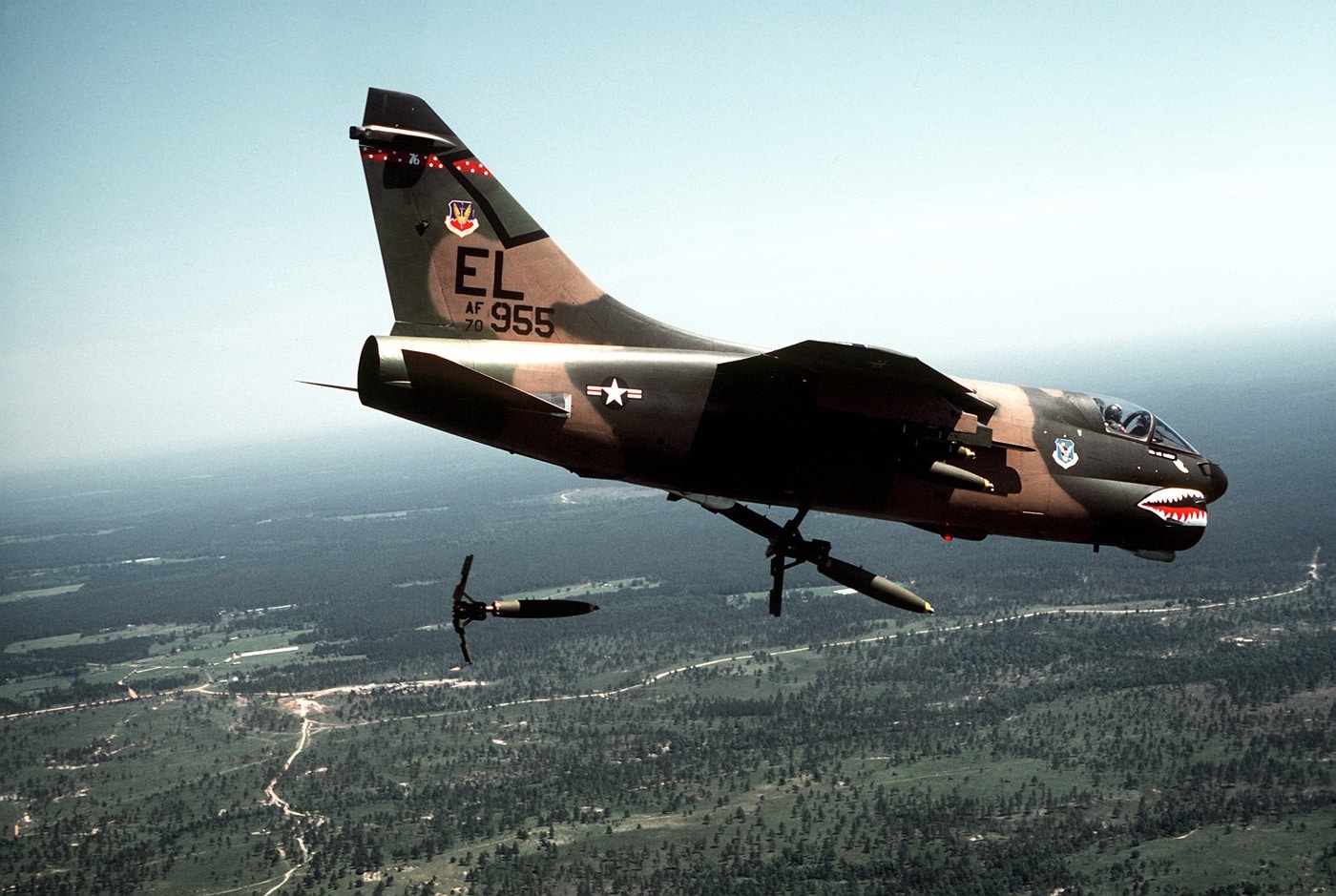
However, to ensure that such a demand wasn’t impossible, the U.S. Navy required that the companies submitting proposals had to develop the new aircraft from one already in service. As a result, Grumman, Chance Vought (then part of LTV), Douglas and North American submitted designs similar to their respective successful aircraft.
While all of the offerings were considered, one stood out.
From the Crusader to the Corsair II
The U.S. Navy determined that the Vought design offered the best flying qualities, as well as favorable maintenance characteristics, and the lowest vulnerability also at the lowest cost. The aircraft was derived from the F-8 Crusader but was still a totally different warbird.
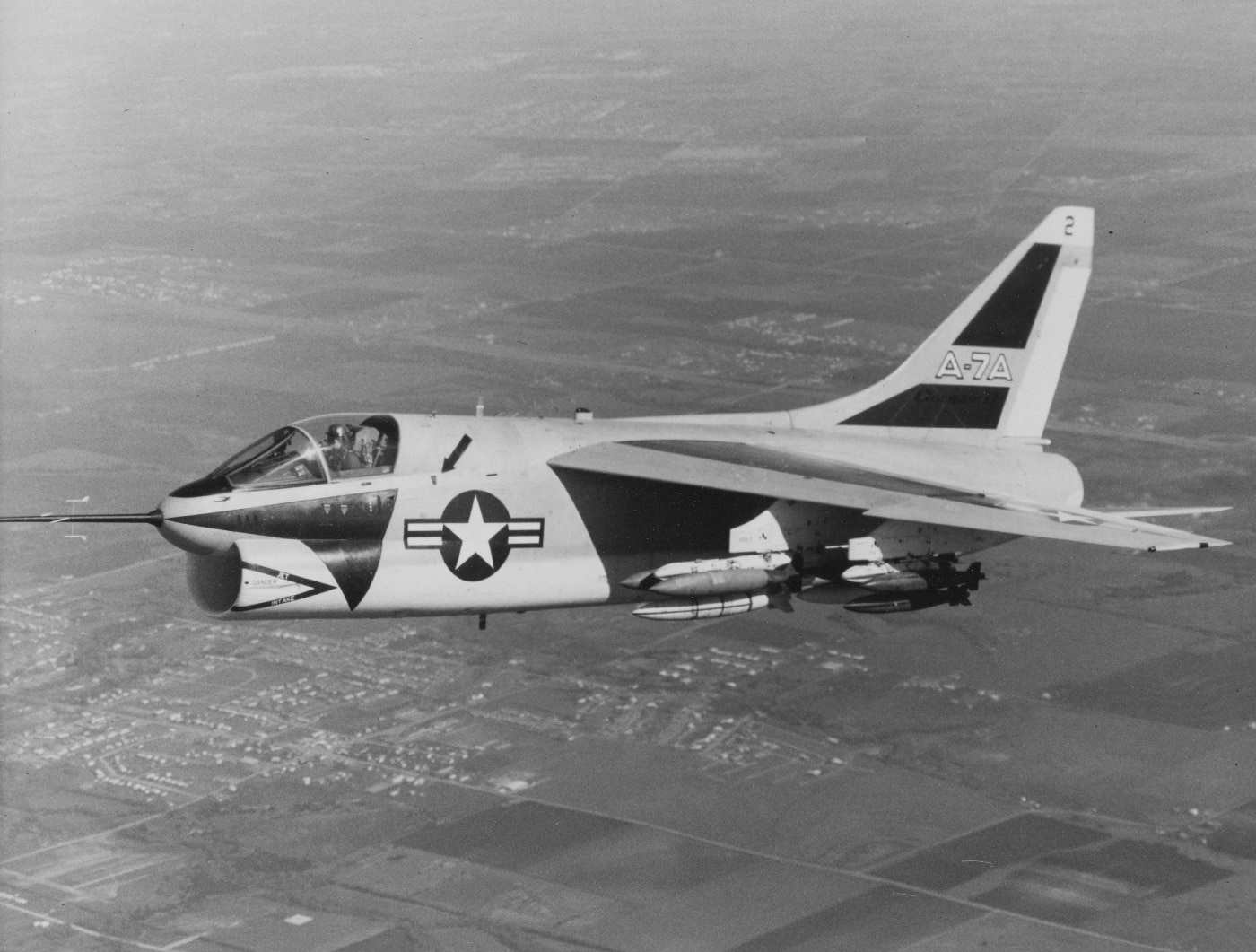
In February 1964, Vought was contracted to build the new carrier-based attack aircraft. As noted, it was to replace the A-4 while being able to carry more bombers over greater distances. The design was based on the F-8 supersonic fighter but with major changes that included restricting it to subsonic speed. That performance restriction meant that structure weight was reduced while its range and weapons load were greatly increased. In fact, the A-7 could carry nearly double the payload of the Skyhawk.
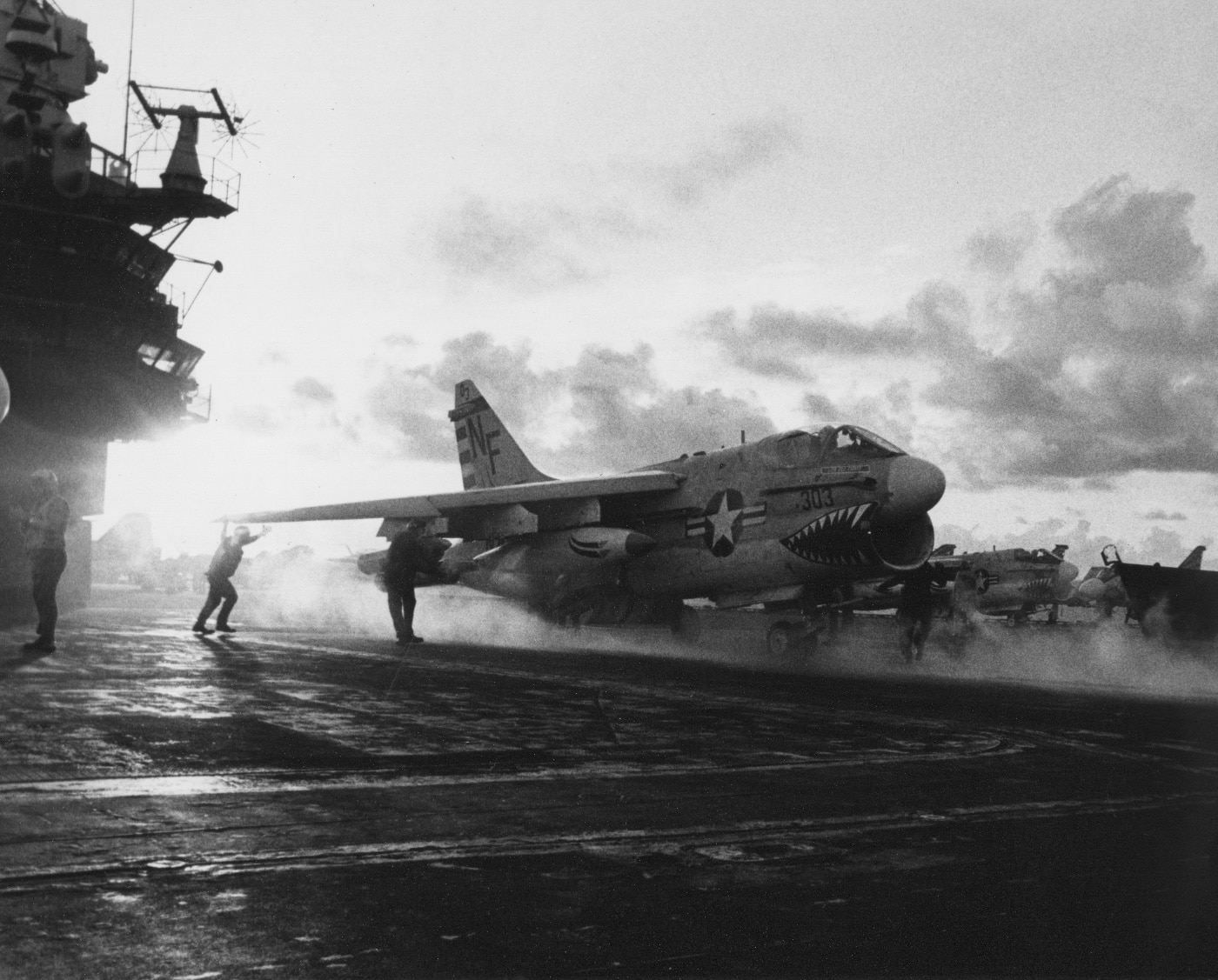
Whereas the F-8 had a unique pivoted variable-incidence wing, the A-7 wing was conventional and attached slightly below the high position, yet leaving ample room for deep-loaded pylons. The fuselage was also shorter than the F-8 but with a large cross-section, ensuring that the aircraft could carry an ample volume of fuel, as well as avionics and other systems, the short landing gears, and the non-augment turbofan engine.
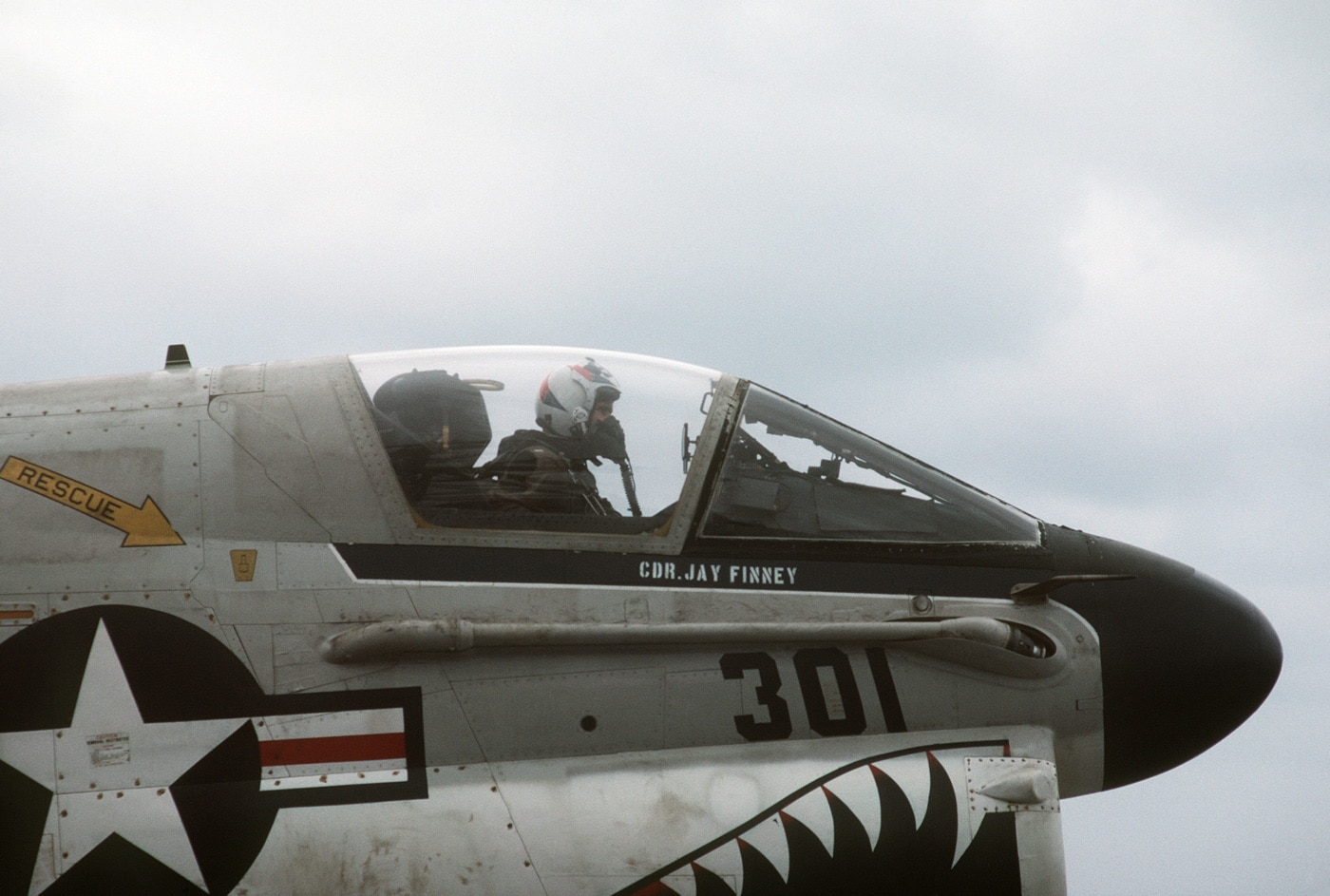
The Corsair II was outfitted with comprehensive armor and damage-resistant systems, along with an exceptionally advanced autopilot and flight systems for all-weather operation, including automatic carrier landing. The aircraft also featured a retractable refueling probe on the right side of the forward fuselage. The original A-7A and B variants were equipped with 1960s-era equipment, including Doppler, multimode radar, nav computer, attitude reference system, and roller-map display. The aircraft also features TACAN, a weapon-aiming computer and optical sight.
Heavy Metal Thunder!
The A and B models were armed with two 20mm Mk12 cannons in the sides of the air inlet in the nose, with the ground attack aircraft carrying 250 rounds. The D and E variants, as well as export models, replaced the cannons with a single M61A-1 20mm gun with a tank of 1,032 rounds — though 500 rounds was the normal loadout.
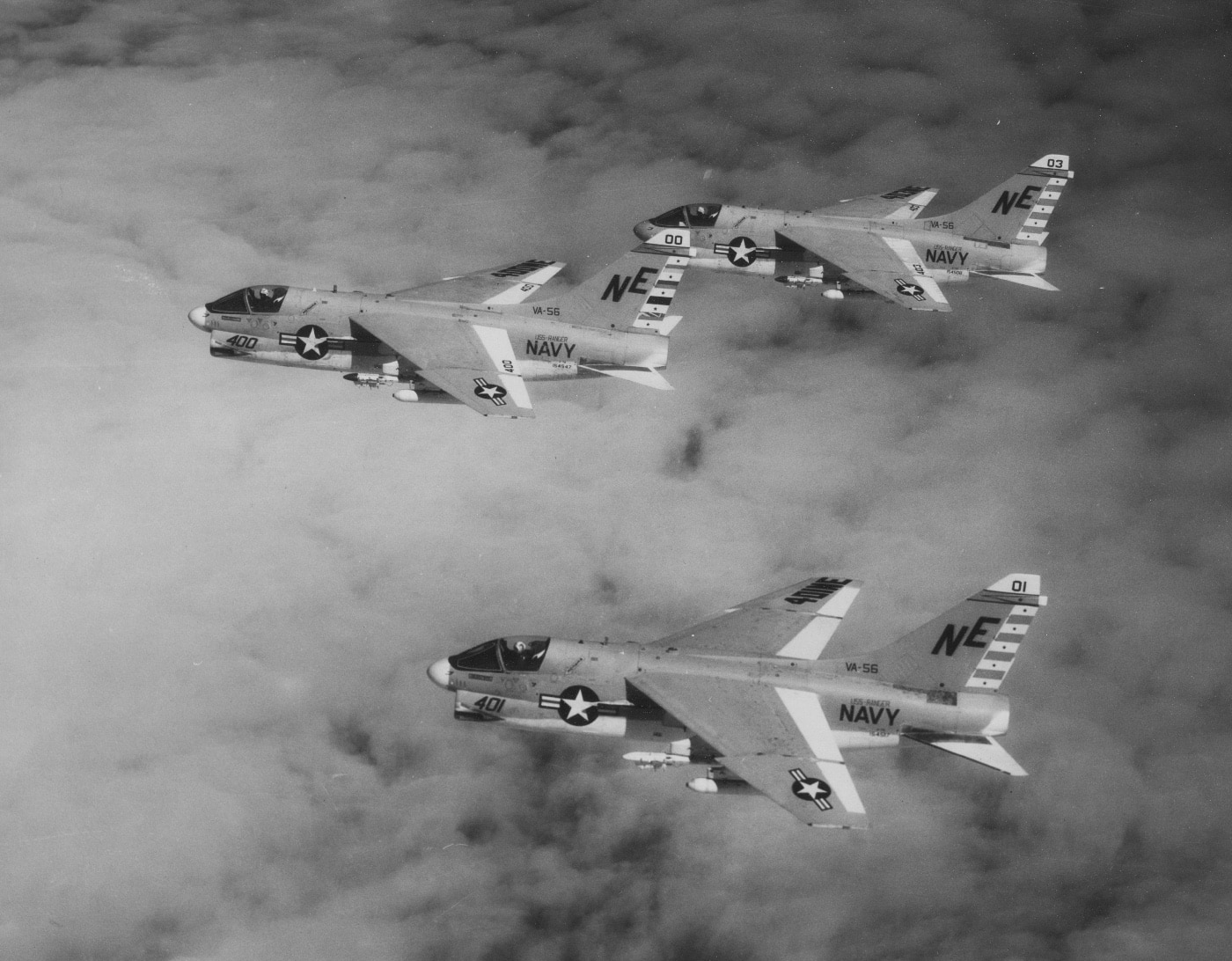
All versions were equipped with four outboard wing pylons, each able to carry 3,500 pounds (1,587 kg) of ordnance and all were plumbed for tanks. The innermost wing pylons, which were not plumbed, were rated for 2,500 (1,134 kg); while the two fuselage side pylons were each rated for 500 pounds (227 kg), and were normally used for Sidewinder self-defense air-to-air missiles (AAMs). However, all of the pylons could not be loaded to the limit at the same time as the A-7 Corsair’s total weight limit was 9,500 pounds (4,309 kg).
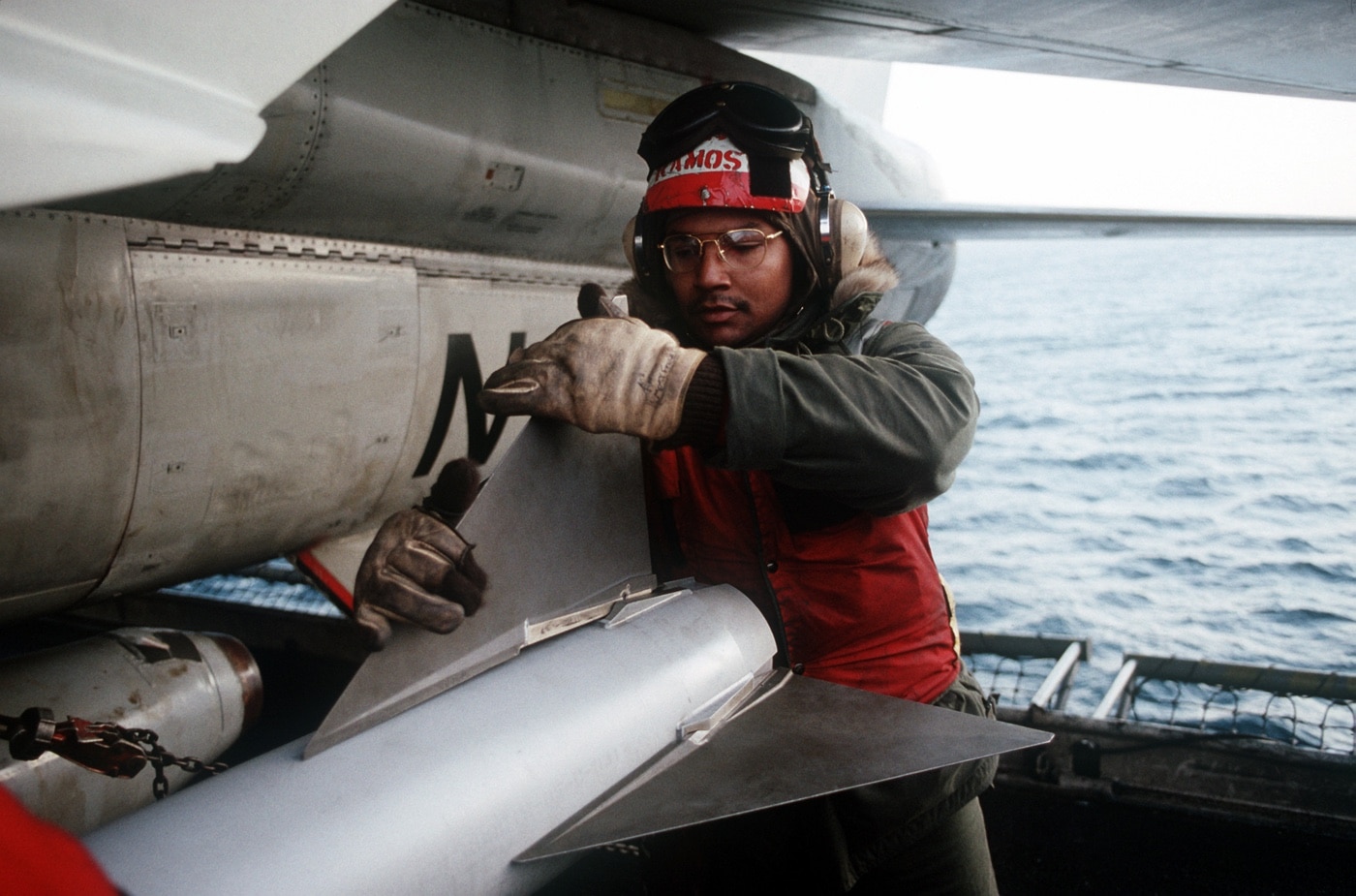
Initially powered by a single Pratt & Whitney TF-30-6 two-shaft turbofan engine, the aircraft could reach a maximum speed of 698 mph (1,123 km/h) at low-level climb. Later models were equipped with the Allison TF41-1 (Rolls-Royce Spey derivative).
Vought — Ready For Service
The A-7A first took flight in September 1965. Within three years of the initial contract, a large number of A-7 Corsair IIs were in service! It was notable for being the quickest development program for a new combat aircraft since 1945. That’s something that would never happen today.
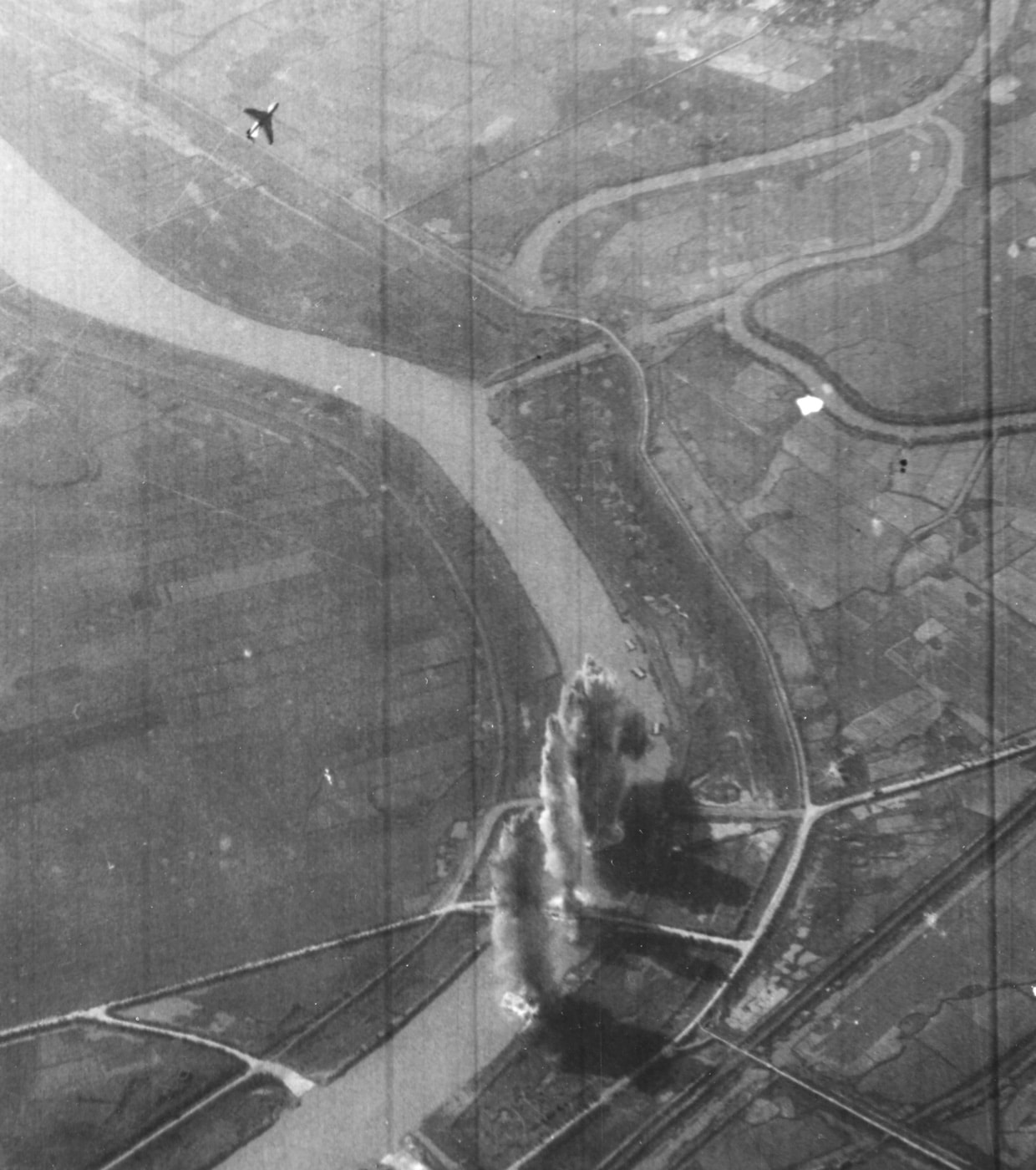
Moreover, it also proved to be the right aircraft for the era.
Attack Squadron (VA) 147 “The Argonauts” became the first unit to receive the A-7A. Even more impressive is the fact that the A-7A Corsair II first saw action in the Gulf of Tonkin on December 3, 1967, operating from USS Ranger (CV-61). The squadron later flew support missions during the siege of Khe Sanh from January to July 1968.
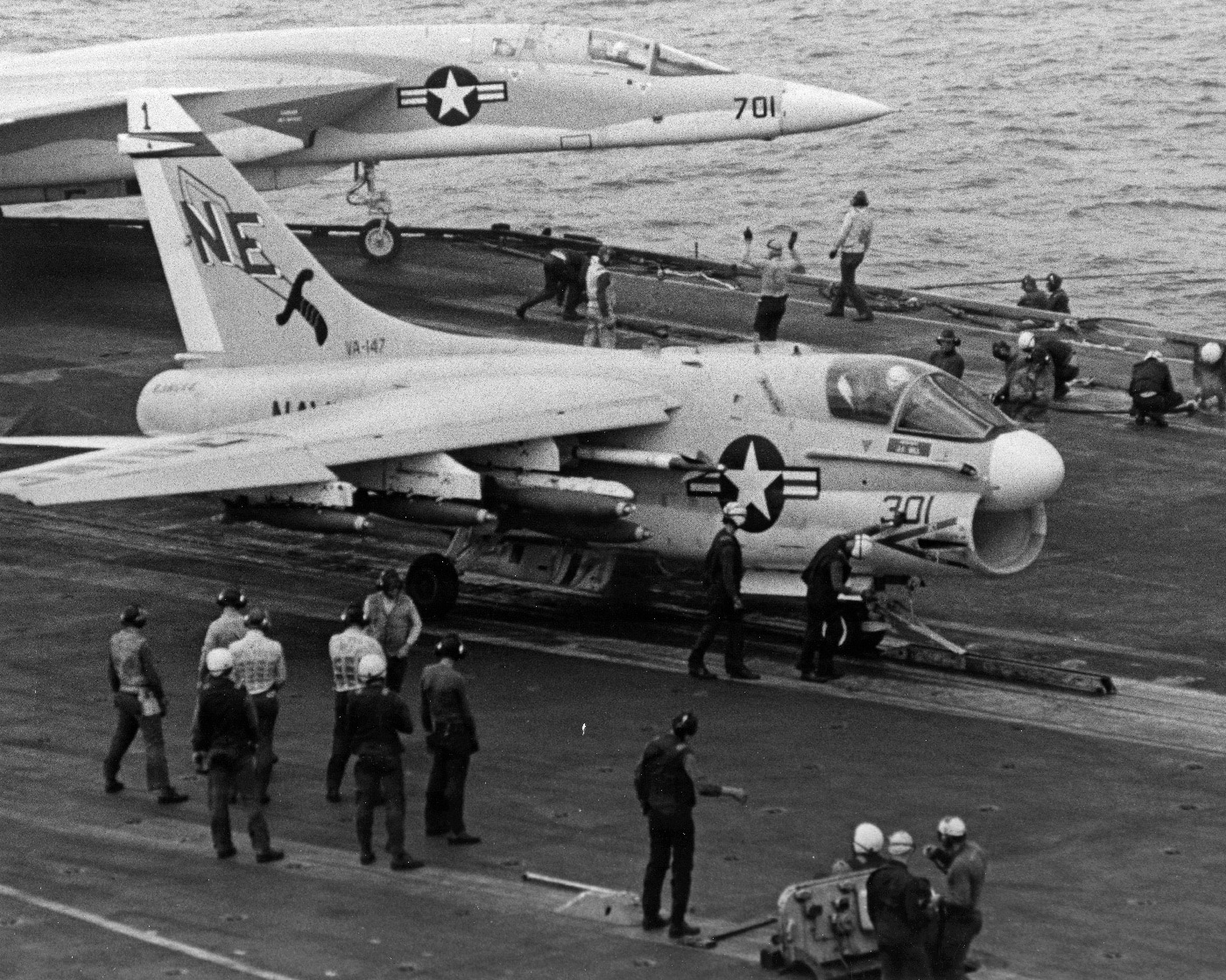
The upgraded A-7E, which encompassed 535 airplanes, saw several improvements to improve its attack capabilities, including a Target-Recognition Attack Multi-Sensors (TRAM) and Forward Looking Infra-Red (FLIR).
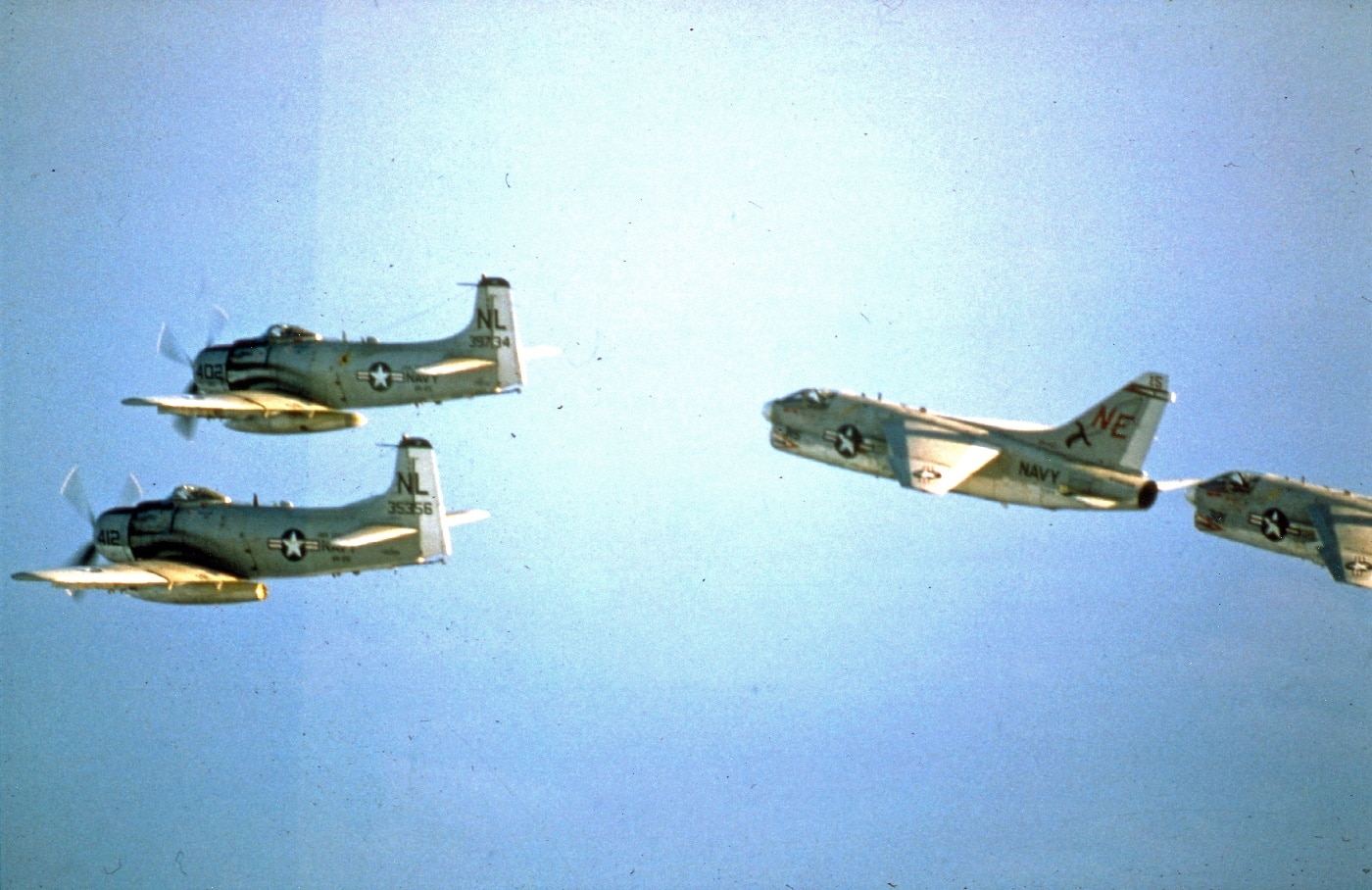
This variant flew its first combat missions over Vietnam in May 1970, and it was subsequently part of the U.S. Navy’s offensive firepower during the Operation Linebacker strikes. They also assisted with the aerial mining of North Vietnamese ports which occurred in the Vietnam War.
After the end of the conflict in Southeast Asia, the Vought A-7E Corsair II remained a mainstay on carrier flight decks in the latter stages of the Cold War. It was employed in combat operations throughout the 1980s in Grenada, Lebanon, Libya, and Panama.
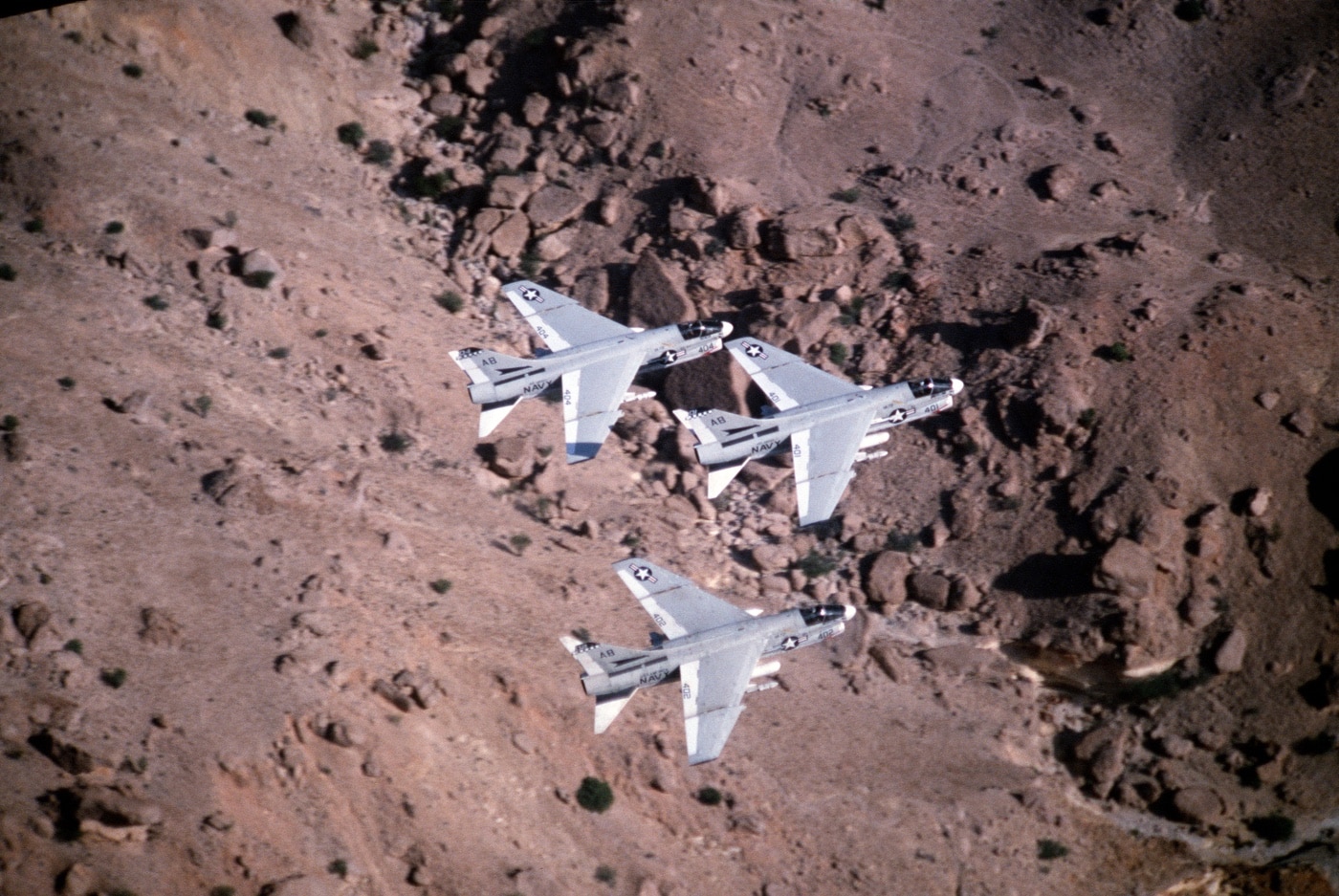
Moreover, it was still in service when the U.S. Navy carriers launched the first strikes into Iraq and Kuwait as part of Operation Desert Storm in January 1991, even as only two A-7E squadrons — VA-46 and VA-72 — were operating from USS John F. Kennedy (CV-67). That marked the final deployment of the venerable Corsair II.
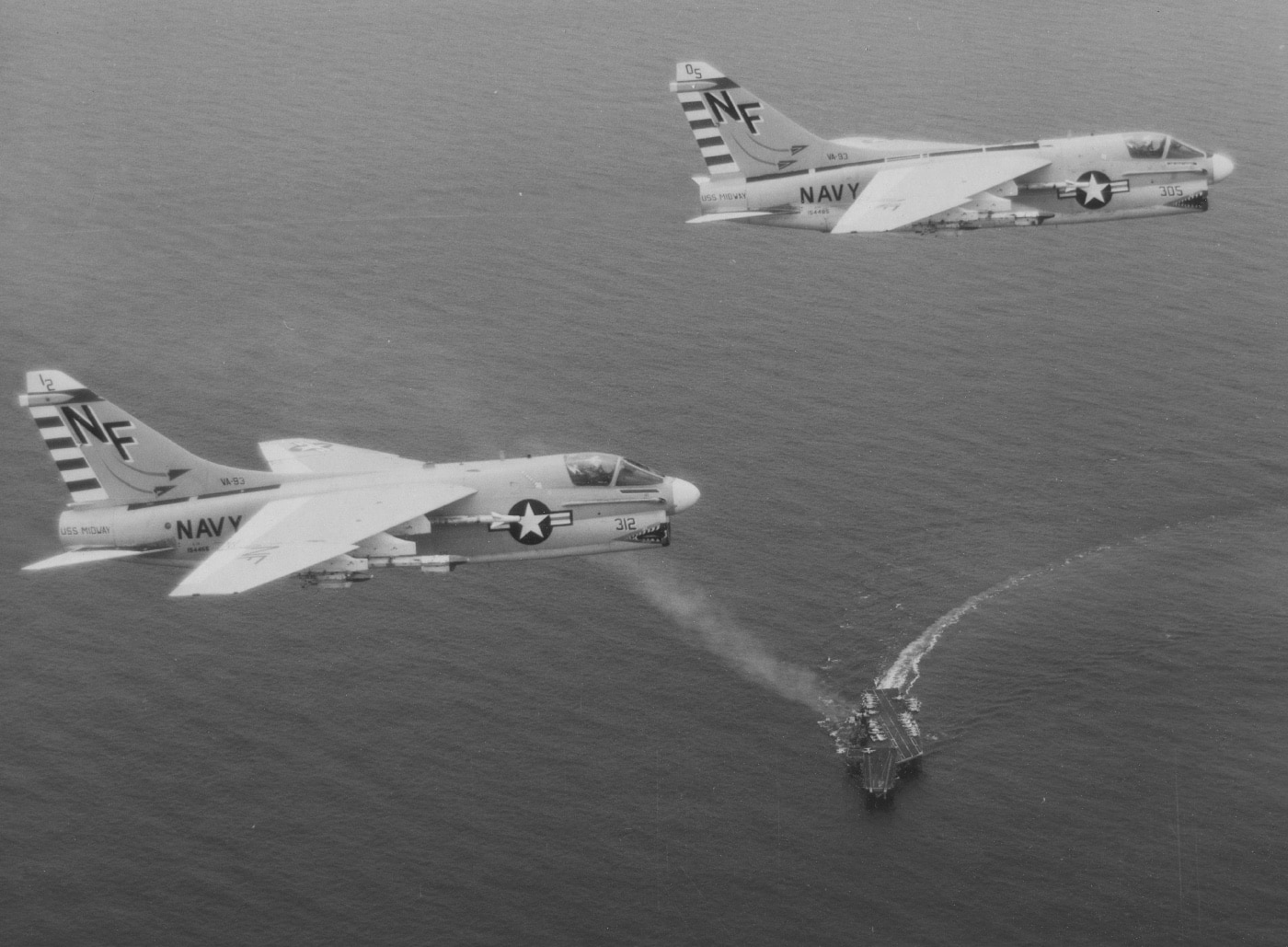
After two decades in service, the A-7E was replaced by the F/A-18 Hornet — as the latter aircraft provided operational commanders with greater flexibility by allowing them to employ the Hornet in either the fighter or attack role. In addition, a smaller number of F/A-18s could do the job of the A-7E in the carrier air wing.
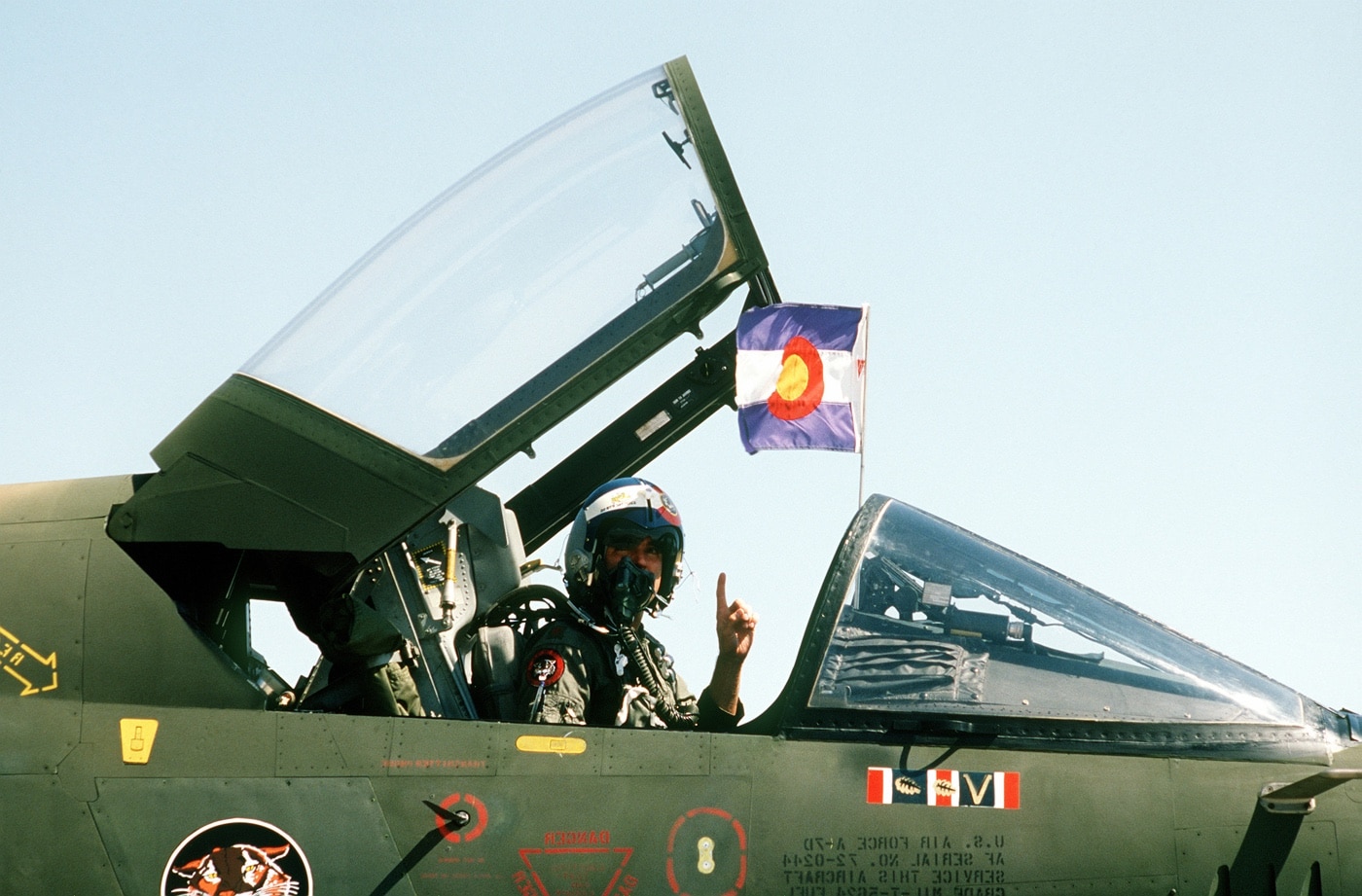
Lost in Action
A total of 98 United States Navy A-7 Corsairs were lost during the war in Vietnam, while one was shot down during an air support mission in Lebanon on December 4, 1983. The A-7, along with an A-6 Intruder, was shot down by Syrian surface-to-air missiles (SAM).
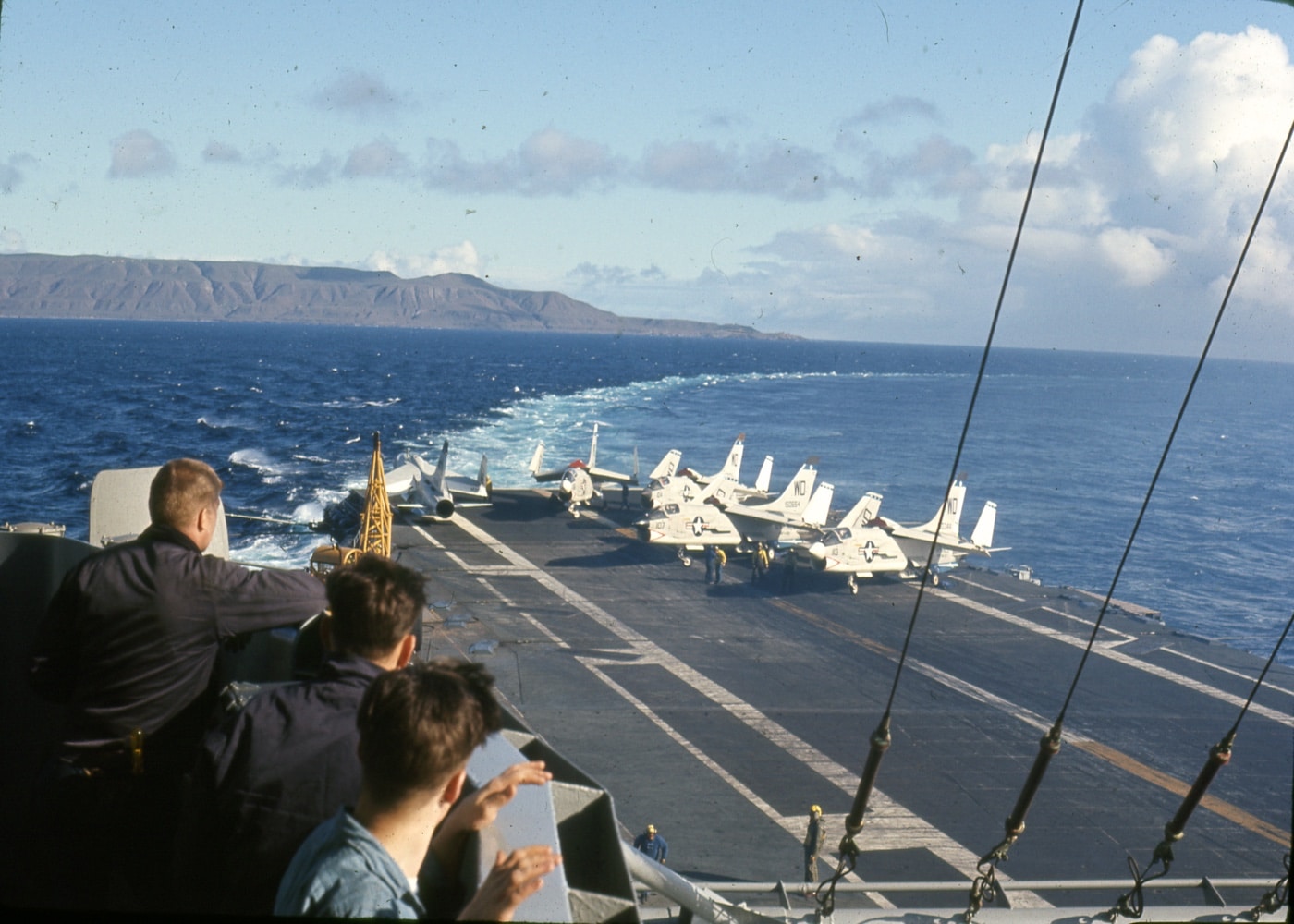
The A-7 pilot, Commander Edward Andrews, managed to guide his damaged Corsair over coastal waters before ejecting. He was subsequently rescued by a Lebanese fishing boat and safely returned to the U.S. Marines. That is believed to be the final A-7 lost in combat operations.
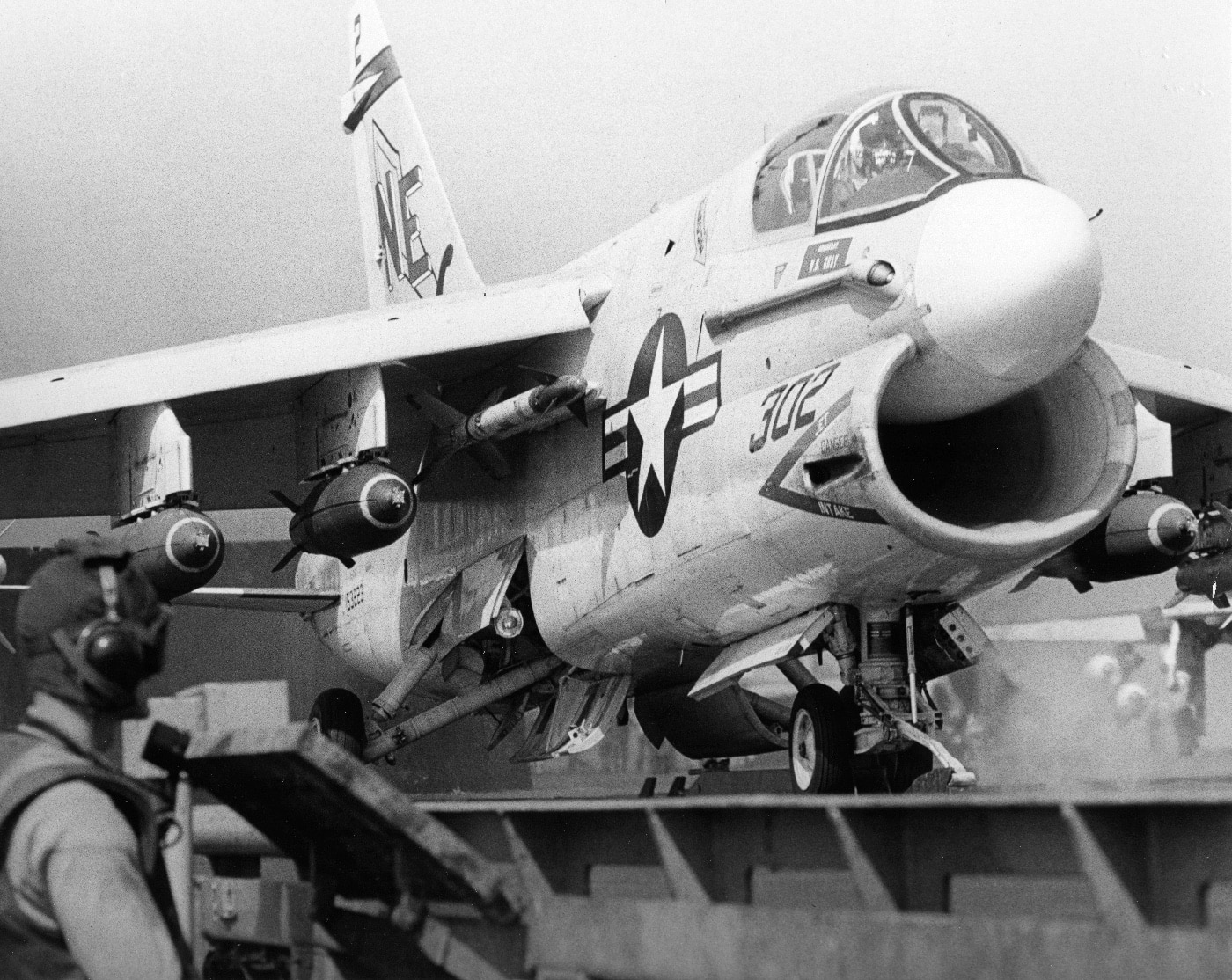
The Air Force Variant: The A-7D
The United States Air Force also operated a variant of the Corsair II — the A-7D, which made its initial flight in April 1968. Equipped with a TF42 engine, it demonstrated its outstanding ground attack capability, serving in the final stages of the war in Southeast Asia with the 354th Tactical Fighter Wing at Korat Royal Thai Air Force Base (AFB), Thailand. The A-7D was noted to have excellent accuracy thanks to its automatic electronic navigation and weapons delivery system — and while it was designed primarily as a ground attack aircraft, the Corsair II still offered limited air-to-air combat capability.
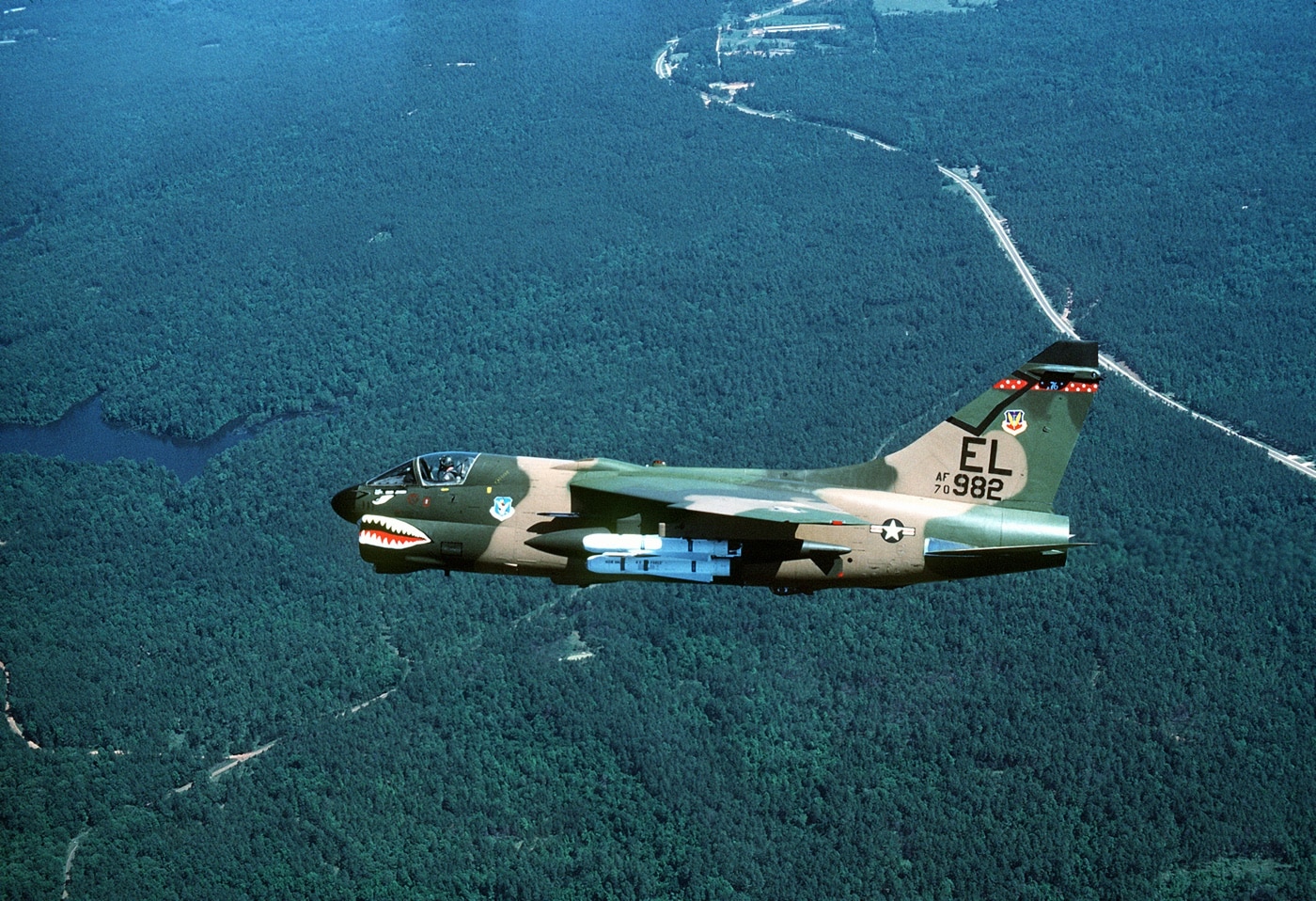
A total of 459 were delivered for service with the U.S. Air Force by the time production ended in 1976. In the mid-1970s, the Air Force began to assign A-7Ds to Air National Guard (ANG) units, and by 1987, the Cold War ground attack aircraft was being flown by ANG units in 10 states as well as in Puerto Rico. A number of A-7Ds subsequently saw combat operations during 1989’s “Operation Just Cause” in Panama, while the last of the A7-Ds were retired in the early 1990s.
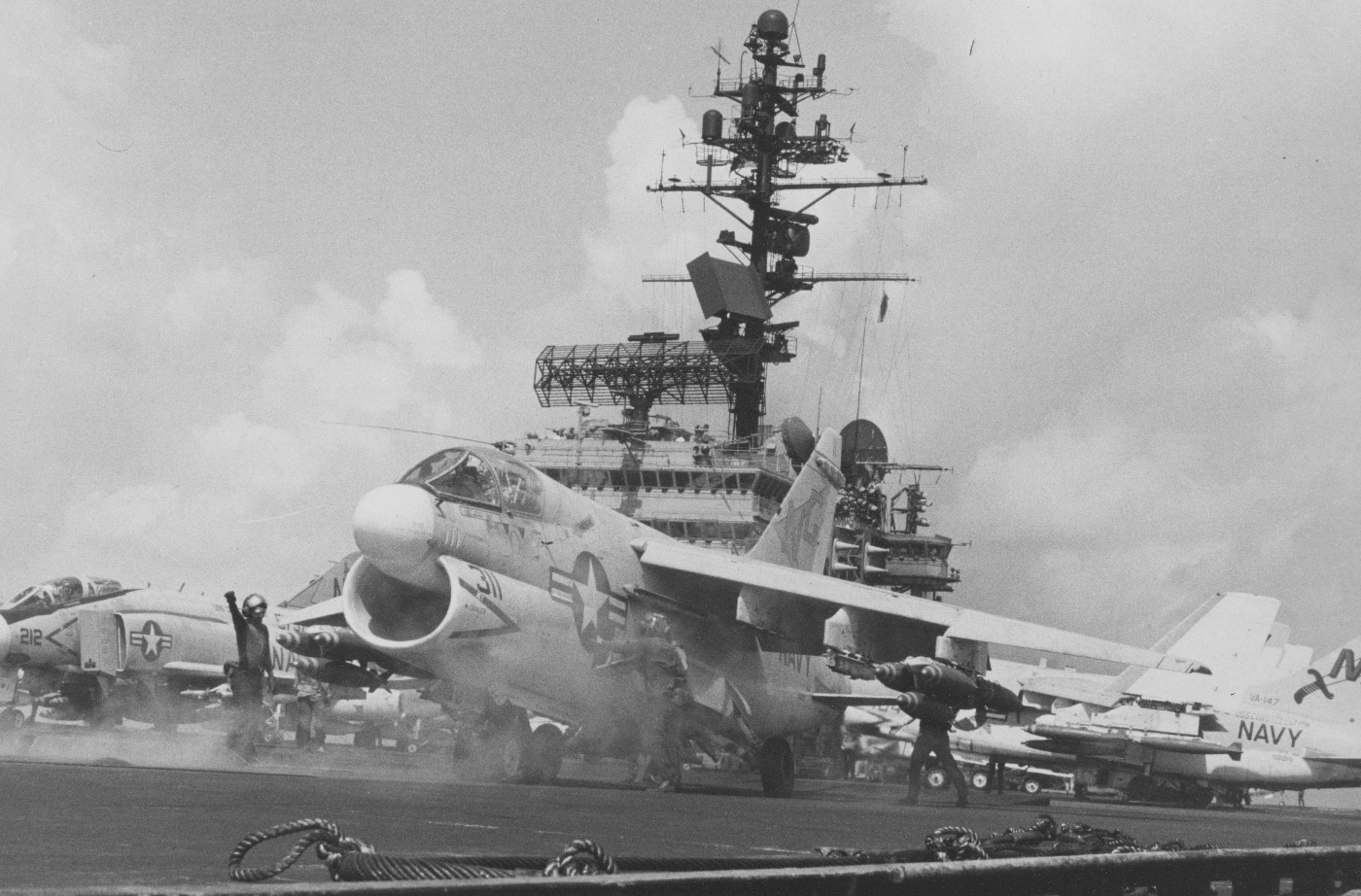
Despite its capabilities, U.S. Air Force pilots came up with several “colorful” nicknames for the aircraft — notably “SLUF” or “Short, Little, Ugly, Fella” (although a more profane variant was often used!).
The Corsair II’s Legacy
In total, more than 1,500 A-7 Corsairs were produced in all variants. The aircraft was also exported to Greece in the 1970s and later to Portugal. The Hellenic Air Force was the final operator of the Corsair II, retiring its last A-7s in 2014.
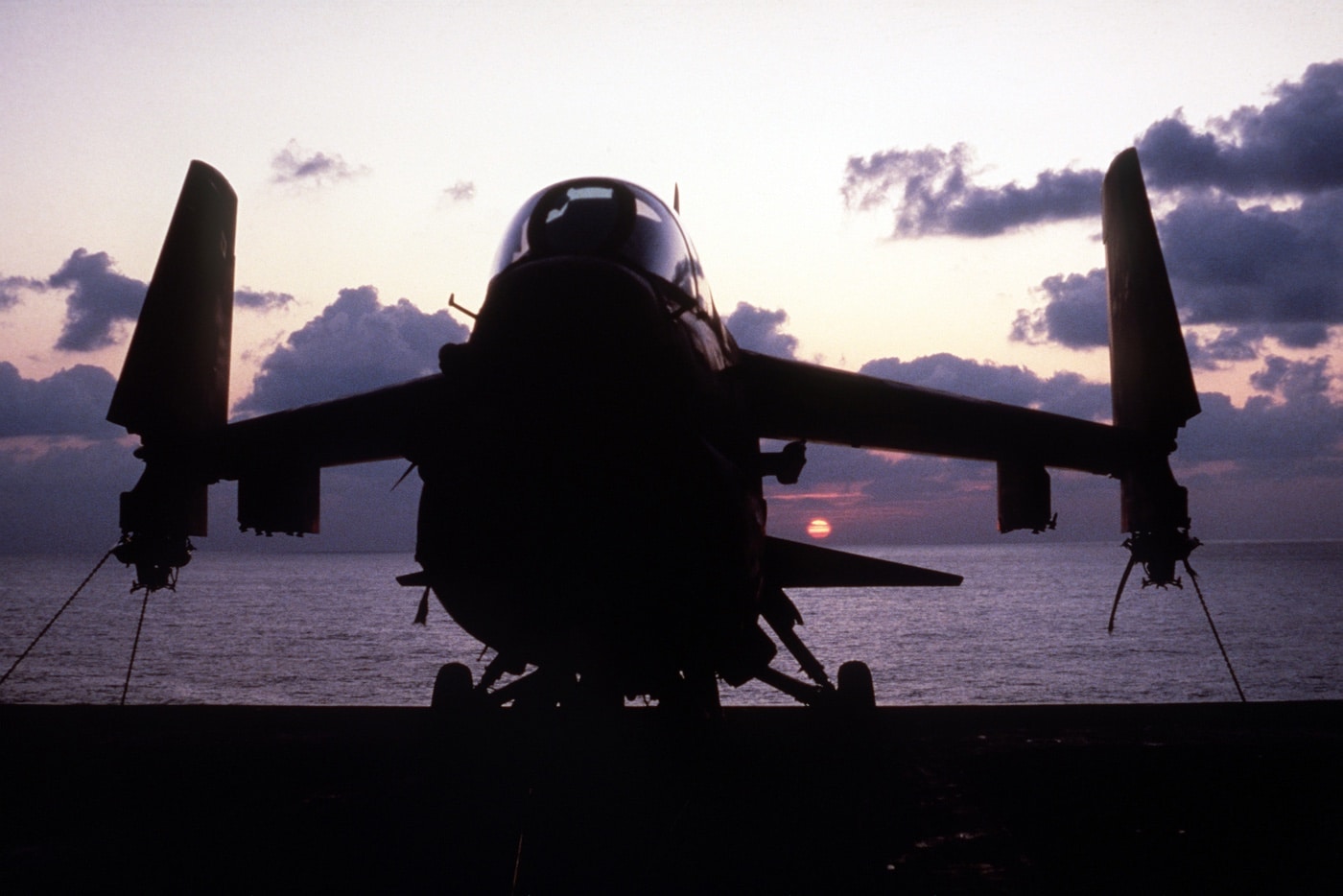
Several dozen of the squat ground-attack aircraft have been preserved and are on display at museums around the country, and that includes an Air Force variant at the National Museum of the United States Air Force in Dayton, Ohio; while fittingly the USS Midway Museum in San Diego has one in its extensive collection of U.S. Navy carrier-based aircraft.
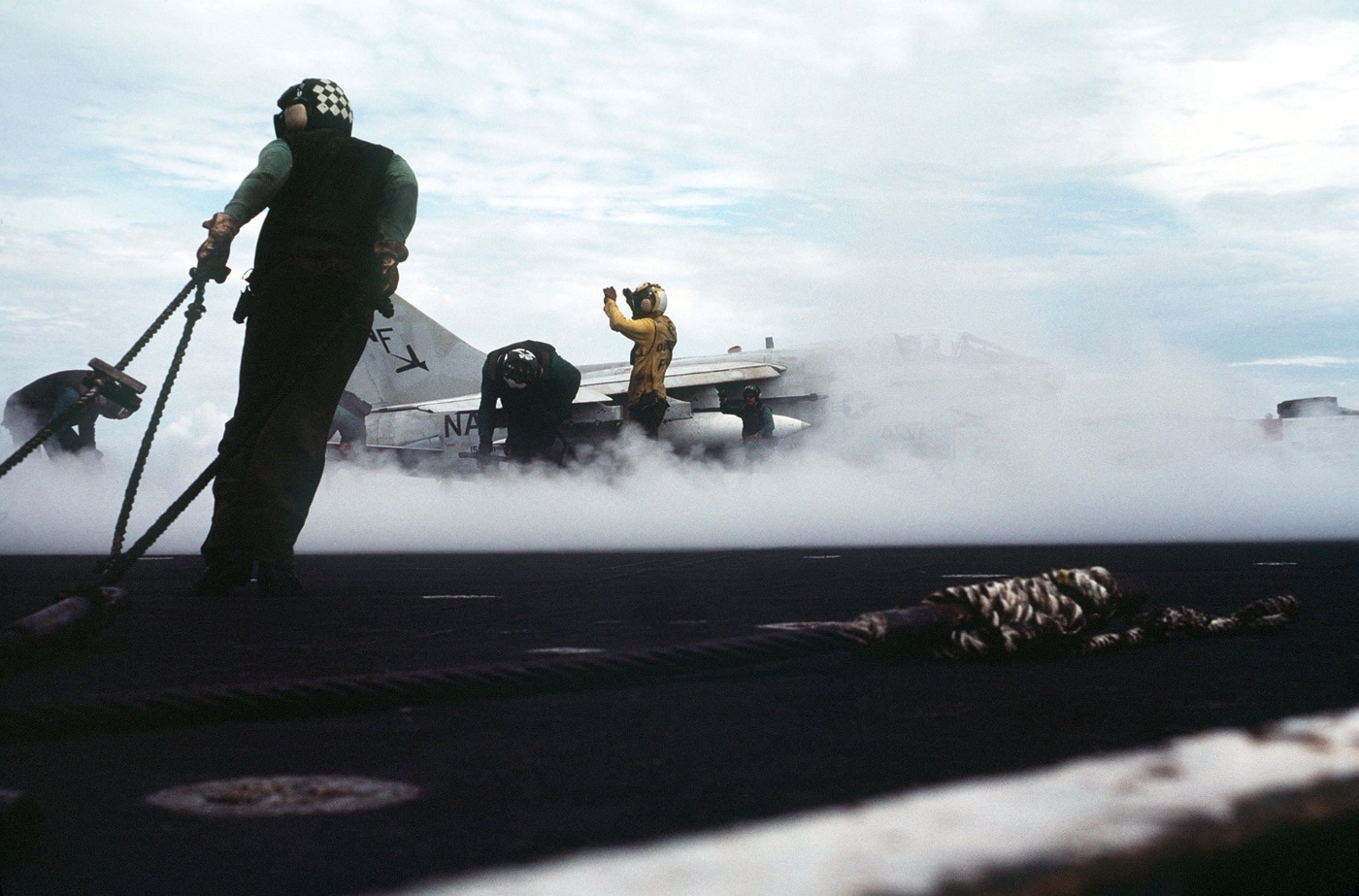
Though not as fondly remembered as the late Cold War carrier-based fighters, the A-7 still remains a testament to the American aviation industry’s ability to answer a call and deliver, while it proved to be well-suited to the combat operations of the Cold War.
Editor’s Note: Please be sure to check out The Armory Life Forum, where you can comment about our daily articles, as well as just talk guns and gear. Click the “Go To Forum Thread” link below to jump in and discuss this article and much more!
Join the Discussion
Continue Reading
Did you enjoy this article?

 387
387






